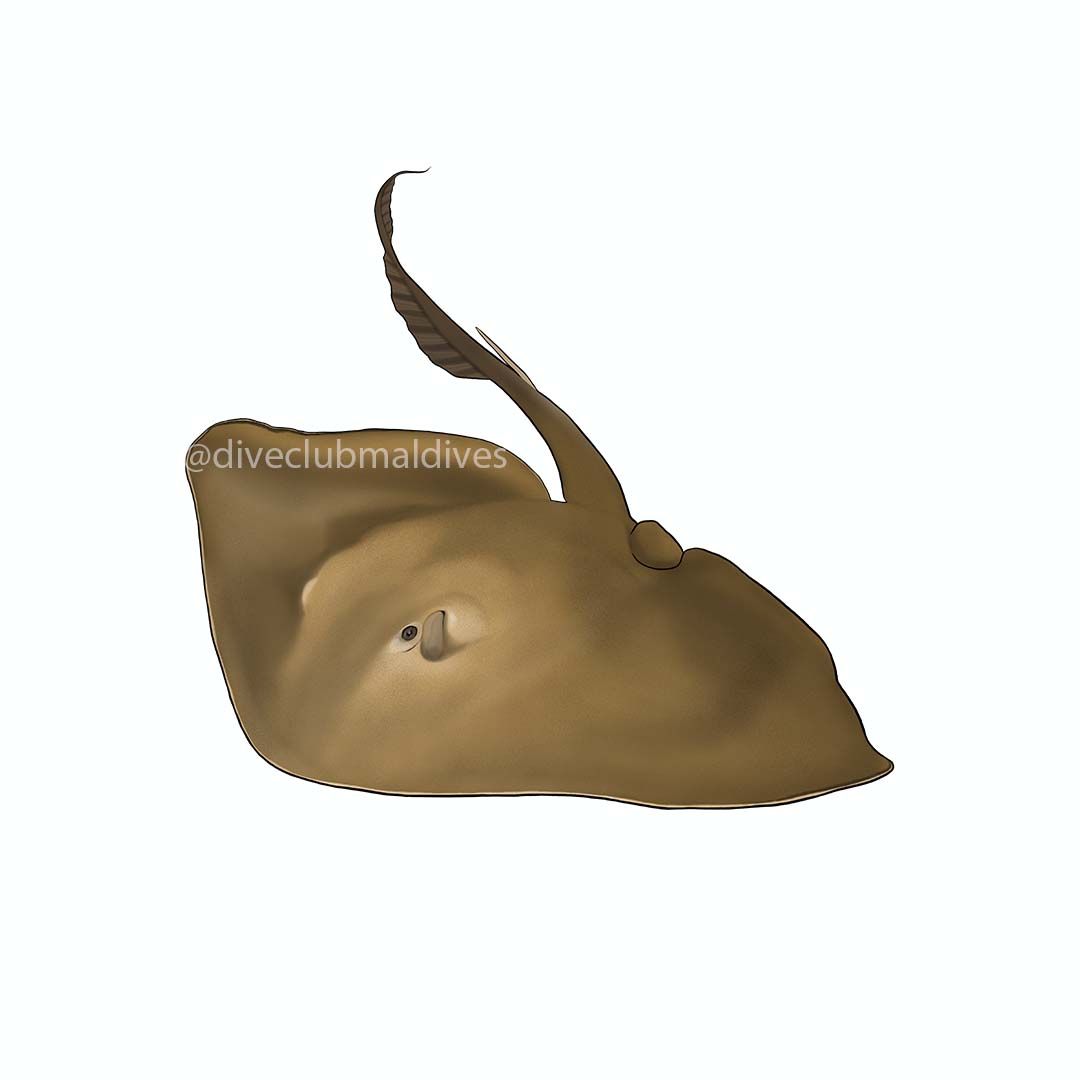English Name: Cowtail Stingray
Local Name: Keyo Faiyh’ Madi
Size: 1.8 m
Family: DASYATIDAE
Order: Myliobatiformes
Distinctive Characters: A medium-sized stingray with a kite-shaped disc that is slightly wider than long; disc width approximately 1.2-1.3 x length. Snout short and obtusely angular with a small protruding tip. Anterior margins of disc almost straight or mildly convex. Pectoral fin apices angular. Pelvic fins large with narrowly rounded apices.
Eyes small. Snout length 1.6-1.8 x combined eye and spiracle length. Mouth small and arched, with 5 oral papillae; 3 central papillae close together. Jaws bulbous. Nasal curtain skirt-shaped with a central split (bi-lobed). Nostrils thin, positioned obliquely.
Wide band of flattened denticles on central disc in adults. Up to 3 small seed-shaped thorns on midline at shoulder; often absent in adults or merged into denticle band. Tail fairly short, tapering gently to tail sting, then filamentous to tip. Tail length (when intact) usually less than 2x disc width. Dorsal finfold absent. Ventral finfold long and very deep; depth beyond caudal sting 3.5-4.8 x tail height. Ventral fold base length 0.77-0.98 x disc width. One caudal sting usually present; set well back on tail.
Colour:Dorsum yellow-brown to grey. Ventrum white, often with a thin dark margin. Tail beyond caudal sting usually dark. Ventral finfold bluish or black.
Habitat and Biology: Tropical seas. On soft substrates, often adjacent to reefs. From shallow estuaries to at least 60m.
Distribution: Northwest Indian Ocean, Arabian Gulf, and Red Sea.
Remarks: Cowtail Rays are caught throughout the region, by trawl, gillnet and longline fishing. Inshore fishing pressure is intense and increasing in the region, particularly in India, Pakistan, and elsewhere. Cowtail Rays are landed and utilized in India, where ray landings have declined significantly.
